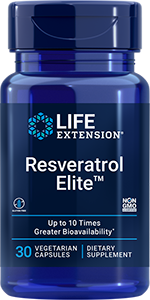| Unlike rheumatoid arthritis, which is characterized by systemic inflammation, osteoarthritis is a localized disease that occurs only in the affected joints. With osteoarthritis, the thin layer of cartilage between the joints gradually erodes and wears away. As the protective layer of cartilage vanishes, the bone beneath becomes pitted and uneven, and the structural integrity of the joint is destroyed. Movement can become extremely painful and, in the worst cases, people who have severe osteoarthritis can no longer take care of themselves on a day-to-day basis. To diagnose osteoarthritis, physicians typically rely on symptoms. It is important that a physician differentiate osteoarthritis from other joint diseases. X-rays may be taken to make sure the diagnosis is correct. Osteoarthritis may be characterized by bone enlargement and narrowing of the joint space. It is important that people with osteoarthritis launch their nutritional program as early in the disease process as possible. The goal is to provide nutrients to help rebuild damaged bone and cartilage. The following nutrients are recommended: - EPA and DHA—1400 milligrams (mg)/day of EPA and 1000 mg/day of DHA
- Ginger—60 mg/day
- Curcumin—900 mg/day, with 5 mg of piperine
- Bioflavonoids—300 mg/day, including nobiletin
- Nettle leaf extract—375 to 500 mg/day
- SAMe—400 to 1200 mg/day
- Glucosamine—1500 mg/day
- Chondroitin—1000 mg/day
- MSM—1000 to 3000 mg/day
- Green tea extract—725 mg/day of green tea powder, yielding at least 246 mg of EGCG
- Vitamin C—1 to 3 grams (g)/day
- Vitamin E—400 International Units (IU)/day, with 200 mg of gamma-tocopherol
- NAC—600 mg/day
| Interactive Life Extension Magazine® January 2011 issue now online! 
Carnosine extends life span
In a major advance, scientists have boosted longevity up to 36% in an experimental study using this vital nutrient! Here we reveal the multiple mechanisms carnosine targets to combat age-related disease. Gamma-tocopherol continues to be overlooked
Find out why gamma tocopherol is required for optimal health. Are you unwittingly starving your brain?
If you’re rightfully avoiding saturated fats and cholesterol, you risk a deficiency of two key brain-healthy nutrients clinically proven to prevent dementia and cognitive decline. The beneficial omega-6
Discover the little-known benefits of gamma-linolenic acid or GLA. FDA blocks cutting-edge arthritis treatment
Dr. Christopher Centeno of Regenerative Sciences has developed a safe, nonsurgical therapy shown to eliminate arthritic pain up to 75% using his patients’ own stem cells. This e-issue of Life Extension Magazine® is extraordinarily easy to use, easy-to-navigate … with the same flip-the-page feeling you get from your printed copy, plus a few extra advantages. You can choose to search out a topic or keyword. Skim quickly. Skip ahead. Even order products. |
















